
Designed by Bra Servizi as a sign of the company’s commitment and dedication to the project, the logo clearly highlights the objectives of the Programme “LIFE Enrich a poor waste”: a black boat – the product which, at the end of its life, best represents, both in terms of numbers and weight, the major source of fibreglass waste – on a blue sea sailing towards an efficient and environmentally sustainable recovery, represented by the green gears. Envi, (short for environment) is fuch-sia, the colour of Bra Servizi, united with the yellow of LIFE, chosen by the EU.
Fuchsia and yellow are also the two colours of Bra Servizi and they symbolise the sun’s energy and the company’s feminine side, which is represented by the daugh-ters of the CEO and the female staff who work at Bra Servizi, the real force behind the Gruppo Piumatti.
LIFE12 ENV/IT/000579 “LIFE Enrich a poor waste”
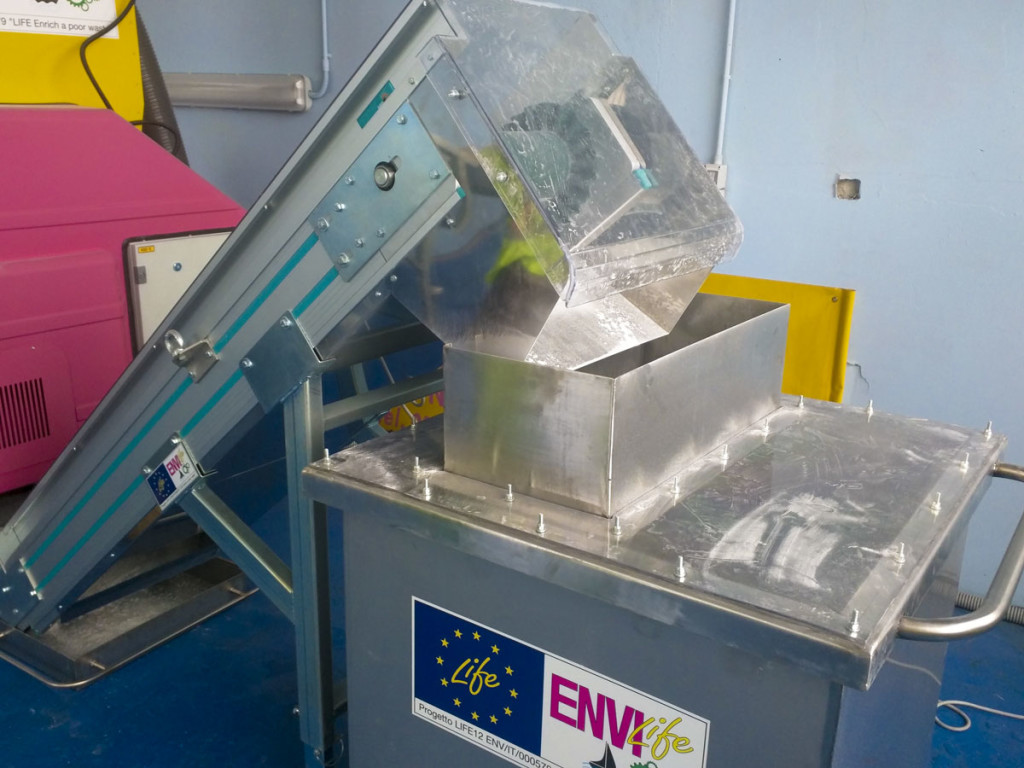
Grinding machinery
LIFE+ is the EU’s funding instrument for the environment.
The general objective of LIFE is to contribute to the implementation, updating and development of EU enviroLIFE+ was set up according to Regulation (EC) n. 614/2007 of the European Parliament and of the Council of 23/05/2007 and it continues and extends the former LIFE programme which came into force in 1992.
The LIFE+ programme is made up of three components:
For more information about the LIFE+ programme and other co-financed projects visit the official website of the
European Commission
https://ec.europa.eu/environment/life/index.htm
Further information about national priorities concerning LIFE+ can be found on the websites of the relevant national authorities.
The National Contact Point for Italy is the Ministry of the Environment, on whose website all the information in Italian regarding the LIFE+ programme can be found, including all current and completed projects: https://www.minambiente.it/pagina/life
The environmental issue addressed by the programme is the disposal of fibreglass waste.
Fibreglass (often referred to as Glass Fibre-Reinforced Plastic, GFRP) is a composite building material made of strands of glass (either as long filaments or short-fibred glass wool) encased in a matrix of thermosetting resins, usually polyester, vinyl ester or epoxide based, which, with the help of special catalysts and accelerants, polymerize at room temperature.
From the 1950s onwards, fibreglass, due to its light weight, strength, stiffness, exertion and corrosion resistance, as well as poor electrical conductivity, has been used in a wide variety of applications.
However, the recycling process of such products is much more complicated than the recycling process of thermoplastic materials.
The first issue is connected to the use of thermosetting resins: the polymerization reaction of such resins is not reversible. They do not return to their original liquid state upon heating, as thermoplastic materials normally do. Therefore fibreglass scraps cannot be melted and remodelled as is quite often the case when recycling plastic.
The second issue is linked to the synthetic vitreous fibres contained in fibreglass: the results from epidemiological research carried out on lab animals forced to inhale and/or put into contact with fibres insufflated directly into their lungs, showed sig-nificant cell alteration at the alveolar and pleural levels resulting in the development of carcinomas and mesotheliomas. Although epidemiological tests on men have not been carried out, glass fibres have been the subject of an EC Directive, which includes them among hazardous substances subject to labelling. Furthermore, glass fibres used in the manufacturing of fibreglass products are classified Category 3 (EU) carcinogens and they must be labelled under code R40 “danger of very serious irreversible effects”.
Whilst for composite materials containing fibres with a high commercial value (such as carbon or Kevlar) it is possible to use several techniques to recover the fibres (vacuum pyrolysis, fluidised bed thermal processes, supercritical fluid extraction), such recycling methods cannot be used for those with a low commercial value (like fibreglass), as they are not economically viable.
Current options for the disposal of GFRP waste are:
As illustrated above, it is clear that at present a safe and efficient process for recycling fibreglass does not exist.

“LIFE Enrich a poor waste” is a demonstration project co-financed by the European Commission through the LIFE+ programme, whose aim is to recycle, ennoble and enrich fibreglass waste, thus creating a range of innovative fire-proof, sound absorbent, insulating and shock resistant components as well as easy to clean panels to be used in sustainable private and public buildings. The panels are designed to be easily dismantled and reused.
Such panels are manufactured with the design for deconstruction concept in mind. This means that they will be de-signed and made to be installed with easily removable mechanical connectors, to make the installation and disman-tling process easier and allow selective removal when demolishing or renovating. The salvaged materials can there-fore be re-used and recycled thus recovering some of the inherent value. Furthermore, this procedure reduces the en-vironmental impact that results from adapting and demolishing buildings.
Another objective is to set up procedures for classes of waste that will be inserted inside panels and covered with natural products (such as leather, wood). The above-mentioned procedures will lead to the creation of a geographical database indicating the neighbouring processing plants as well as a central collection point for household waste, thus permitting the monitoring of waste distribution and the forecasting of necessary recycling operations.
The expected results from the implementation of the project “LIFE Enrich a poor waste” are as follows:
“LIFE Enrich a poor waste” is a demonstration project co-financed by the European Commission through the LIFE+ programme, whose aim is to recycle, ennoble and enrich fibreglass waste, thus creating a range of innovative fire-proof, sound absorbent, insulating and shock resistant components as well as easy to clean panels to be used in sustainable private and public buildings. The panels are designed to be easily dismantled and reused.
In order to meet the targets and achieve the expected results, these are the necessary steps involved:
The project involves several innovative aspects, ranging from waste collection strategy to methods used in the manufacturing process of the new panels.
The setting up of a database indicating neighbouring GFRP waste collection points and the relative quantity produced will enable forecasting strategies to be implemented for the re-treatment of such waste. Usually the main waste disposal sites show a certain seasonality and an almost predictable quantity per year: such information would allow collection and re-treatment planning, thus avoiding allocating an excessively large area for the temporary storage of the waste before it is treated. This will minimize the risk of waste dispersion into the environment, as the time between collection and re-treatment will be the shortest possible.
A second innovative and important factor is the manufacturing of combined structures, namely multi-layered panels, during the re-treatment of GFRP waste. The functional parts of the new panels (the back, with soundproofing or reducing properties; the front, aesthetically pleasing, easy to clean, soft and shock resistant) will be put in place immediately after the core of the fibreglass panel has been formed. This important quality of the new product is achieved thanks to the re-cycling of ground waste, which already contains fibres steeped in resins, thus enabling the distribution of newly in-jected resin on the surface of the panel core. This will result in a smoother surface, which will not require polishing, and in the availability of reactive species (glass fibre is inert) to allow the adhesion to the functional layers.
Last but not least, the new panels, made with fibreglass waste, will have exceptional properties, that are not available even in the latest and most innovative ceramic or polymeric based covering materials: the multi-layered structure allows synergy between several types of materials, resulting in panels that are good thermal insulators, light weight, sound-proof, shock resistant, radio-transparent, wholly recyclable, easily to install and dismantle, designed for deconstruction and, most importantly, act as a thin supporting layer for valuable aesthetic products such as leather, wood or cork.
On 15th January Dr Agnese Roccato from the external monitoring team Astrale GEIE-Timesis, visited our company to see how the LIFE Enrich a poor waste project was progressing. During the meeting, with also the partners from the University of Padua present, the Bra Servizi team illustrated the ambitious objectives and explained the various activities that were planned for the following months. It was a useful meeting for all concerned, which showed how much the Gruppo Piumatti would like to do to help the environment. Now, as projected, we are creating the panels with a 30% ground fibreglass and a high performance material externally so as to create soundproof and design products. The project will conclude in June with an analysis that show that fibreglass is a reusable resource.

Notice Boards – Project Life+

Truck and Trailer – Project Life+
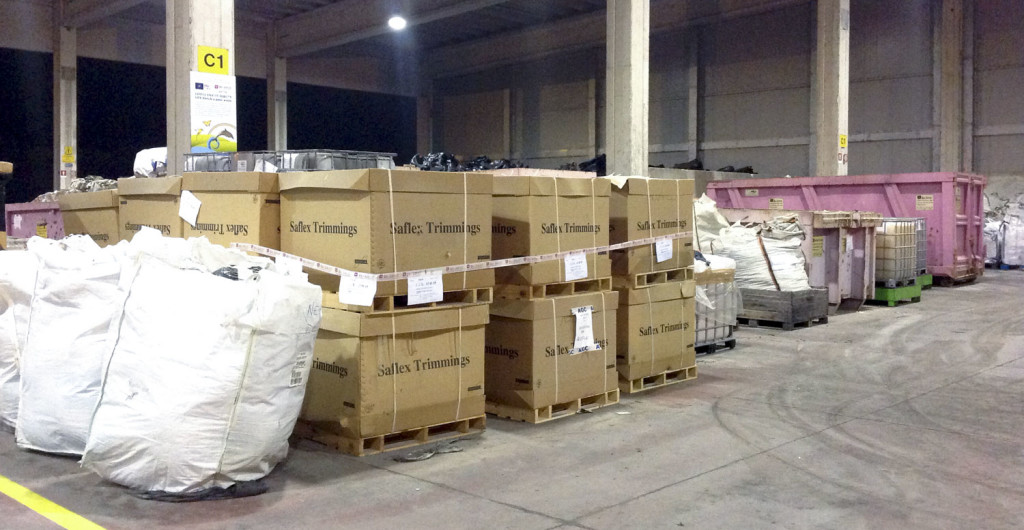
Dedicated Area
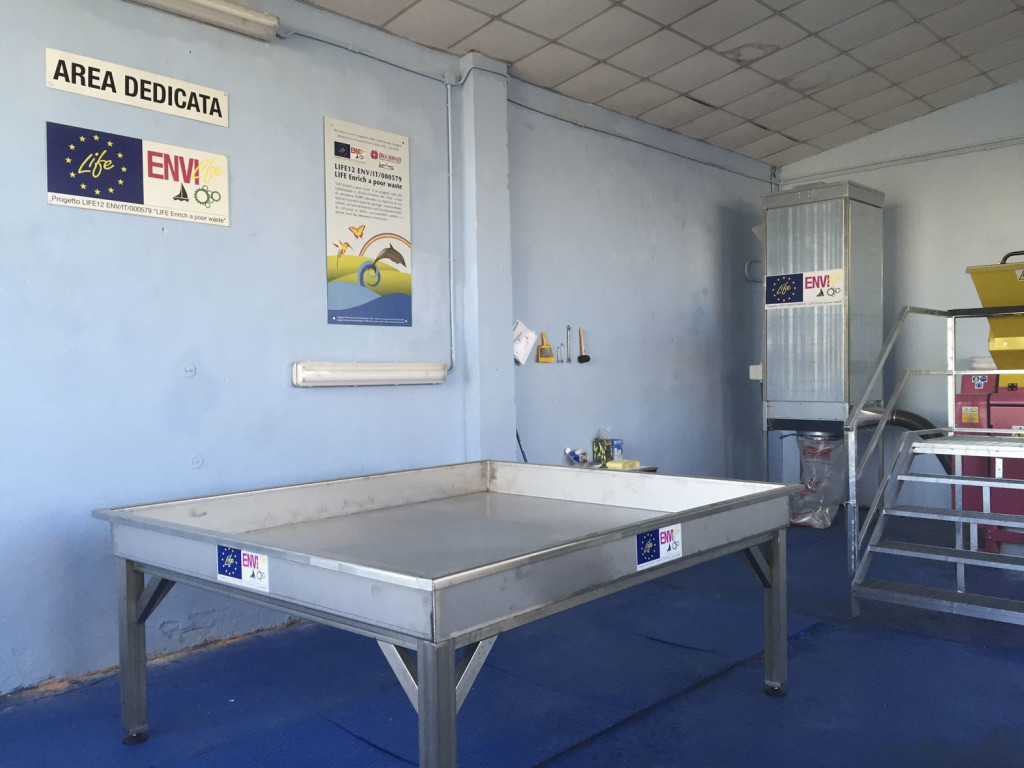
Dedicated Area
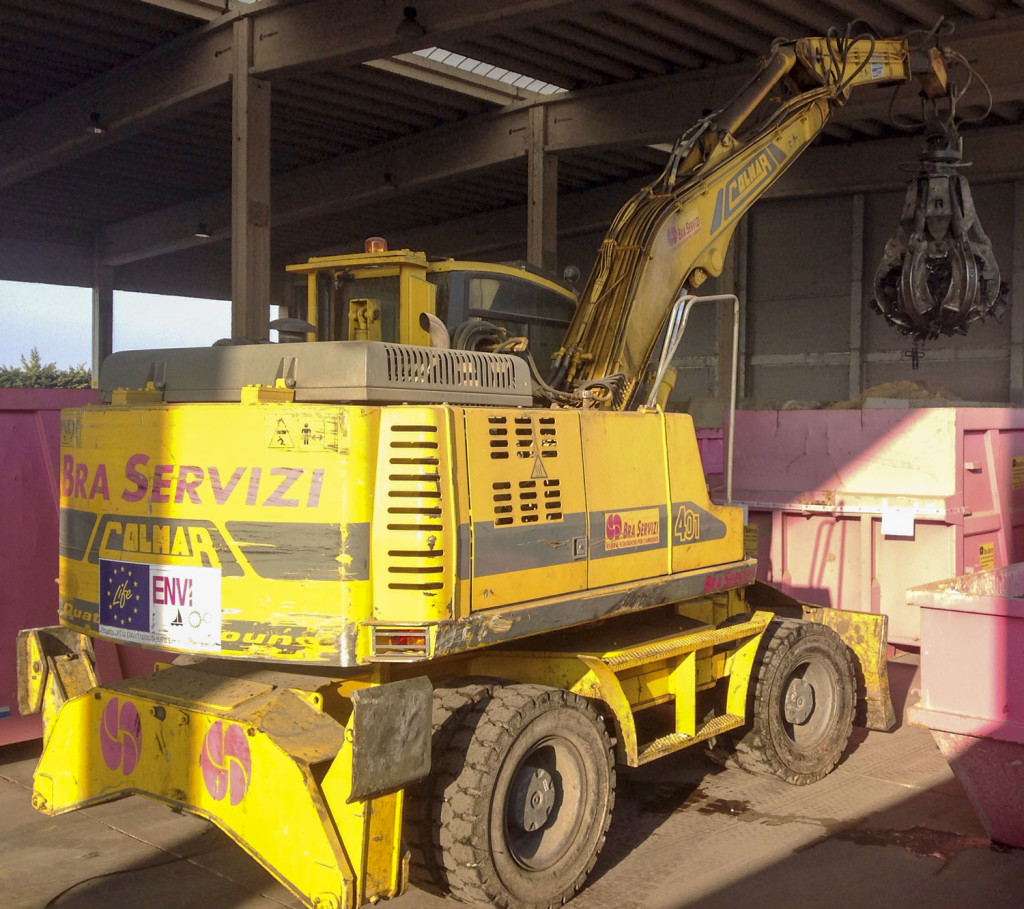
Loader -Project Life+
Download Example of Discarded fibreglass waste (GFRP) (pdf)
Completed B3 activity with the granulator. Download PDF file.
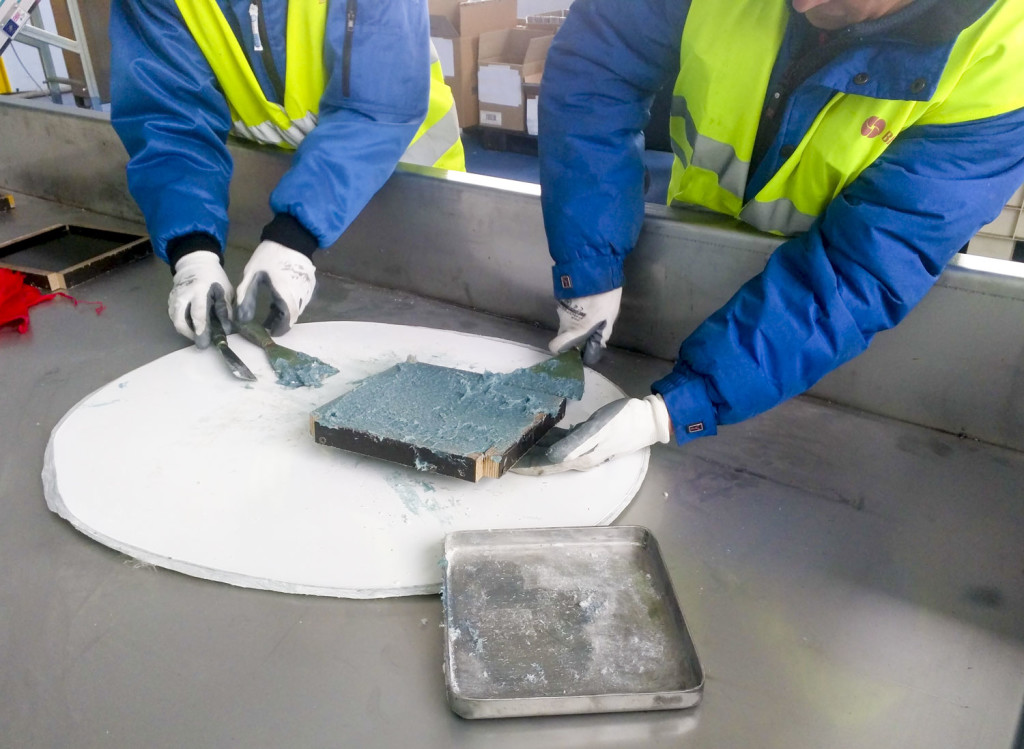
Making of a mould using recycled material
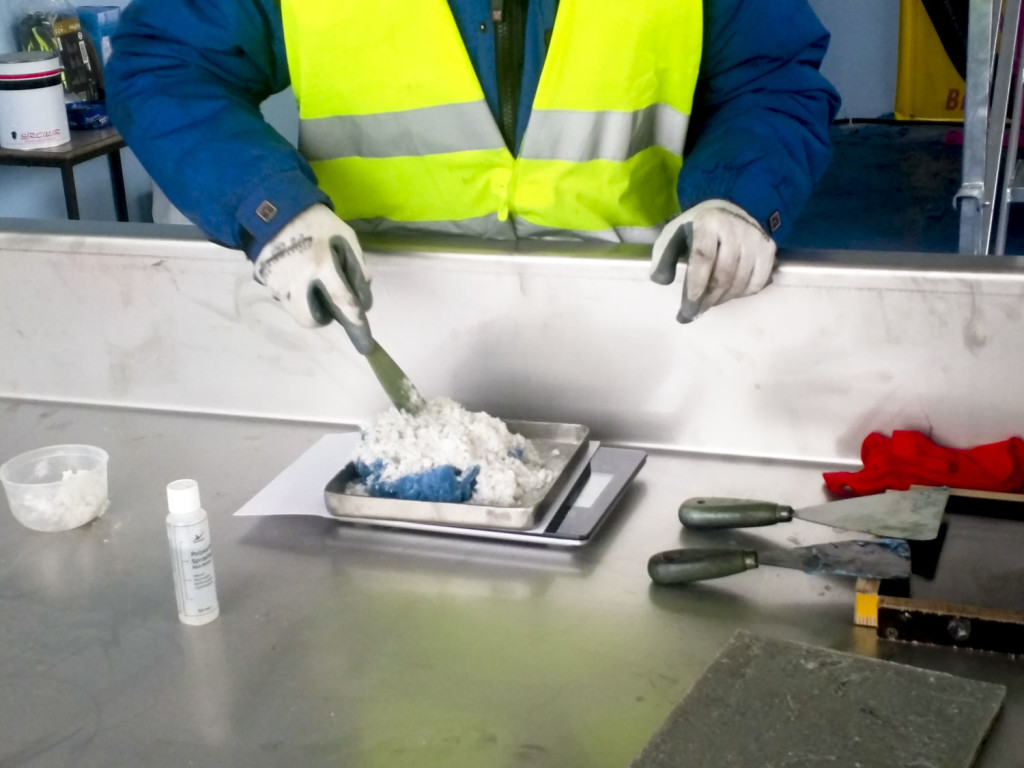
Making of a mould using recycled material

Making of a mould using recycled material

Prototype containing 30% ground fibreglass

Example 1 – ground fibreglass
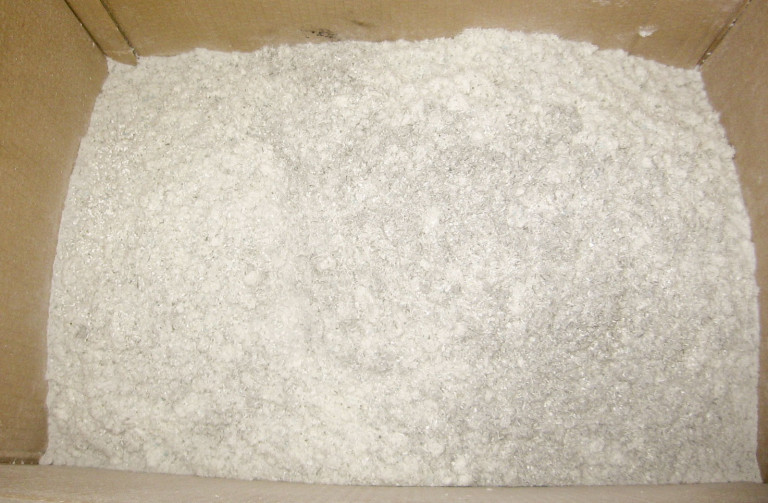
Eample 2 – ground fibreglass
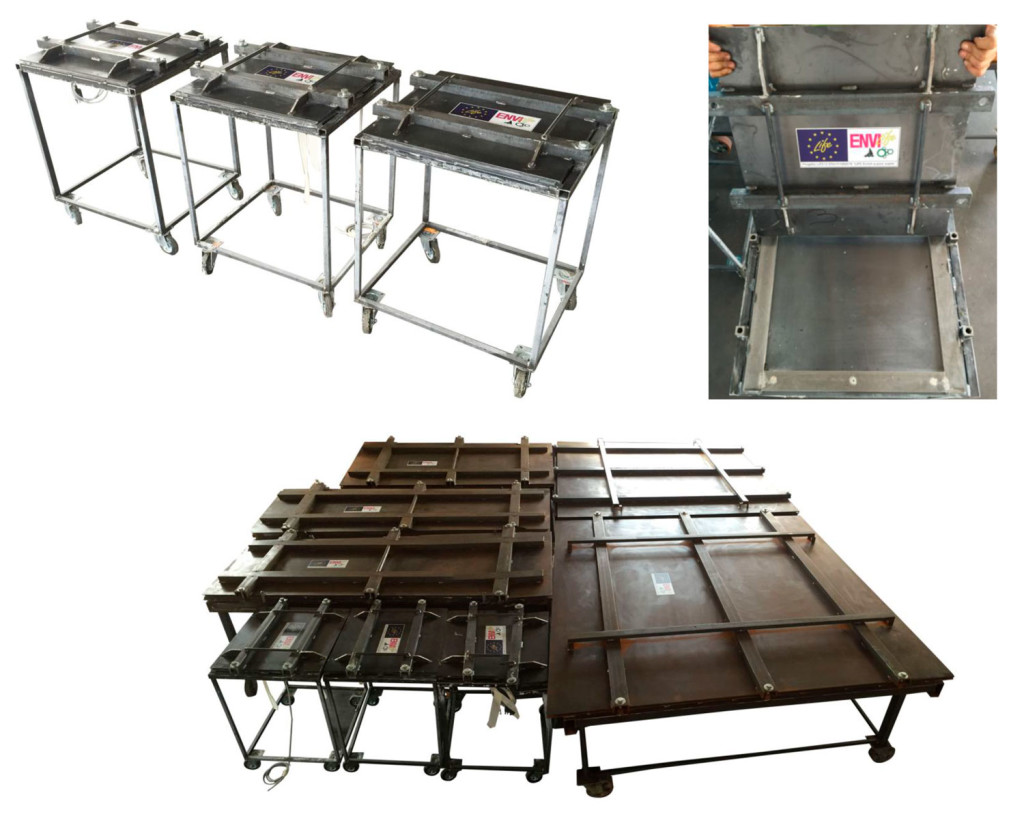
Different Sized Moulds
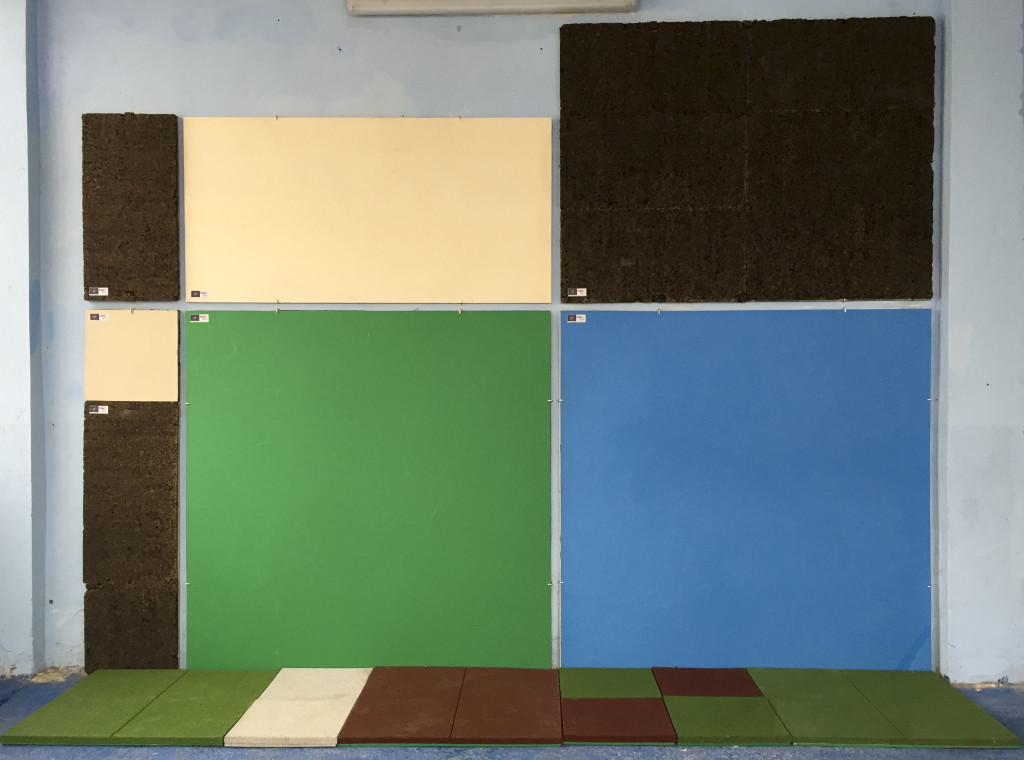
Wall and Paving.

Wall

Recycled fibreglass 30% + Rubber / Cork

Recycled fibreglass 30% + Rubber

Recycled fibreglass 30% + Cork

Recycled fibreglass 30% + Plasterboard

Recycled fibreglass 30% + Wood

Recycled fibreglass 30% + Leather
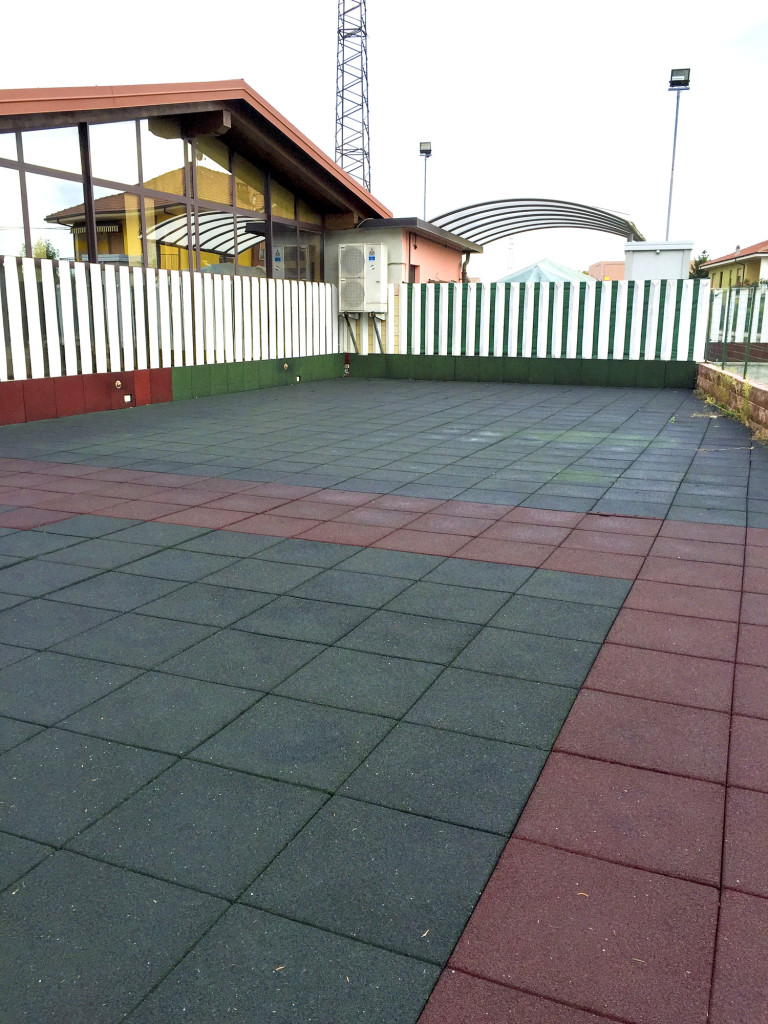
Demonstration area to prevent the growth of grass allowing children and adults to play in complete safety, thanks to the absorption characteristics of the paving.

Demonstration area to prevent the growth of grass allowing children and adults to play in complete safety, thanks to the absorption characteristics of the paving.

Recycled fibreglass 30% + Rubber

Whiteboard with enamel, paint and decorations – “Autumn”

Whiteboard with enamel, paint and decorations – “Summer”

Whiteboard with enamel, paint and decorations – “Spring”
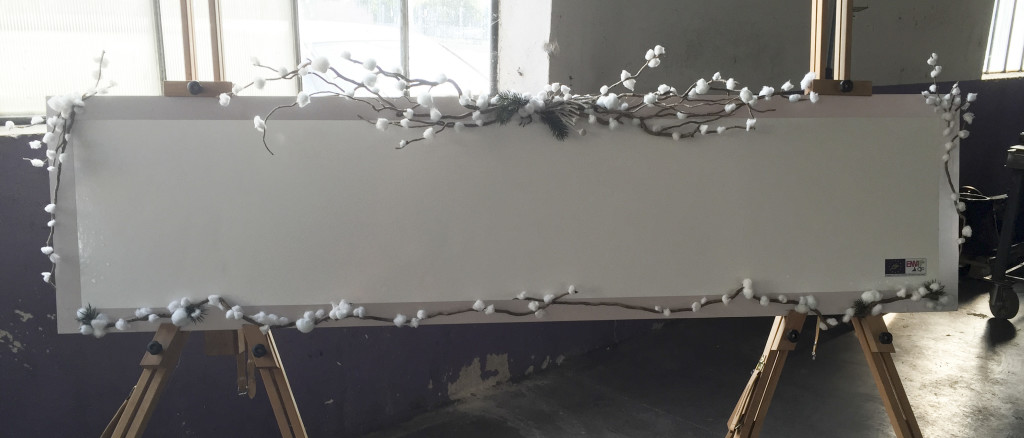
Whiteboard with enamel, paint and decorations – “Winter”

Whiteboard with enamel, paint and decorations – used by schools on their visits.

Exterior board for outdoor basketetball net
Definition of disposal and end-of-life procedure for the new panels and Life Cycle Assessment study:
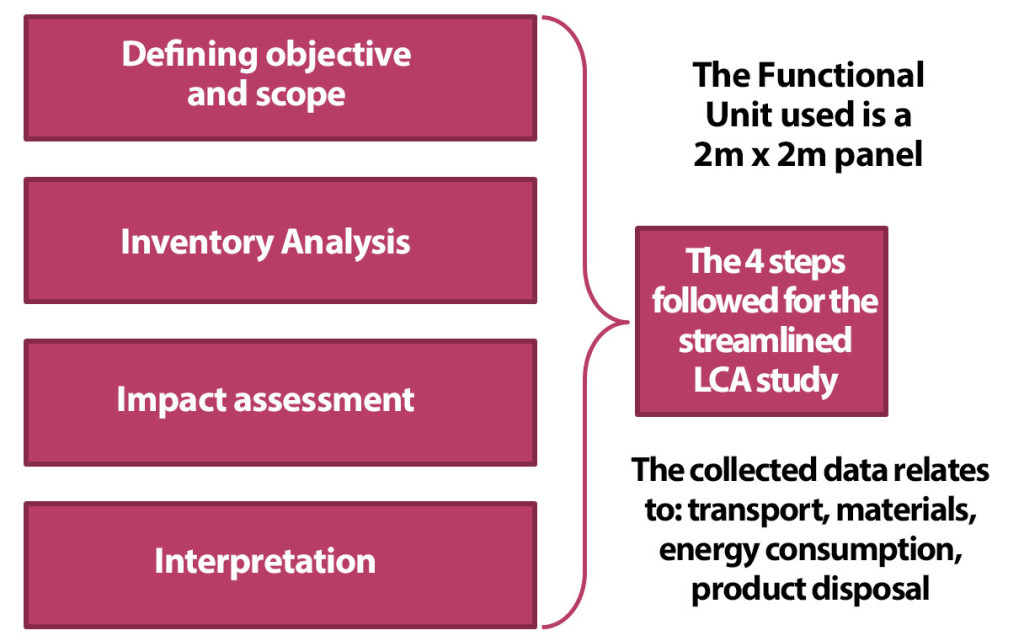
The system boundaries were analysed and defined by understanding the process units in the following figure (grinding, mixing, drying and disposal):

Final Presentation
Download the Italian version of the final presentation given at Restructura, Turin, 2016: Life-Final-Presentation (pdf)
Life Brochure
Download Life Brochure (pdf)
Life Flyer
Download the flyer given out at the various Italian trade fairs: Life Flyer (pdf)
Layman’s Report
This explains in layman’s terms why Bra Servizi chose to get involved in the Life Project, its aims and the results achieved.
The report also contains a sample of ground fibreglass, the waste transformed into a secondary raw material.


Ground Fibreglass Sample
Download Layman’s Report (pdf)
Bra Servizi Company Brochure
Download the Bra Servizi Company Brochure (pdf)
Single Environmental Authorisation Registration Number 606 (9/11/2016)
Available for download in the Customer Area
Press review / Events – Life+ Project
360 kg boat made up of the following materials:
After being broken apart by specialist equipment, a team of workers manually separated the boat into its different components. Part of the fibreglass sheet (damp) was ground, taking care to avoid pieces of metal and other impurities. The resulting material was of an inferior quality than a simple sheet, but production times were similar. The dampness had an effect on the quality of the final product.
Contact person at Bra Servizi: m.coyle@braservizi.com
University of Padua:
https://www.unipd.it/en/
Department of Industrial Engineering (project collaborators):
https://www.dii.unipd.it/en/
Official Site of the European Commission – Life Programme:
https://ec.europa.eu/environment/life/
Ministry of the Environment:
https://www.minambiente.it/ (IT)
Ministry of the Environment – Life Programme:
https://www.minambiente.it/pagina/life (IT)